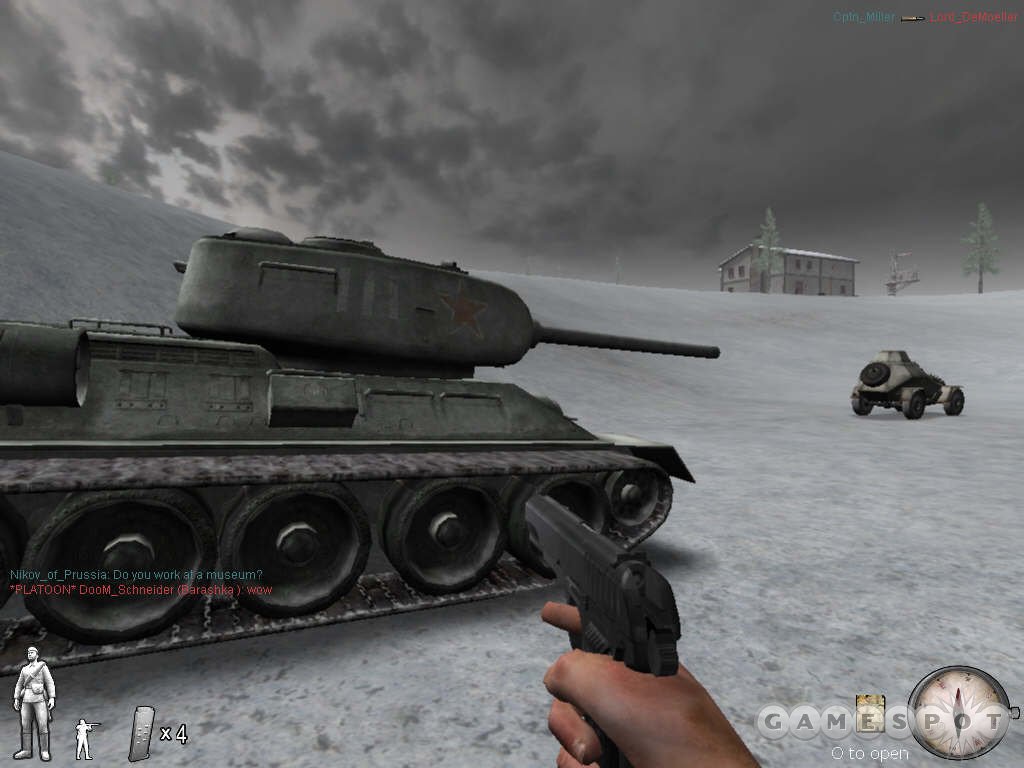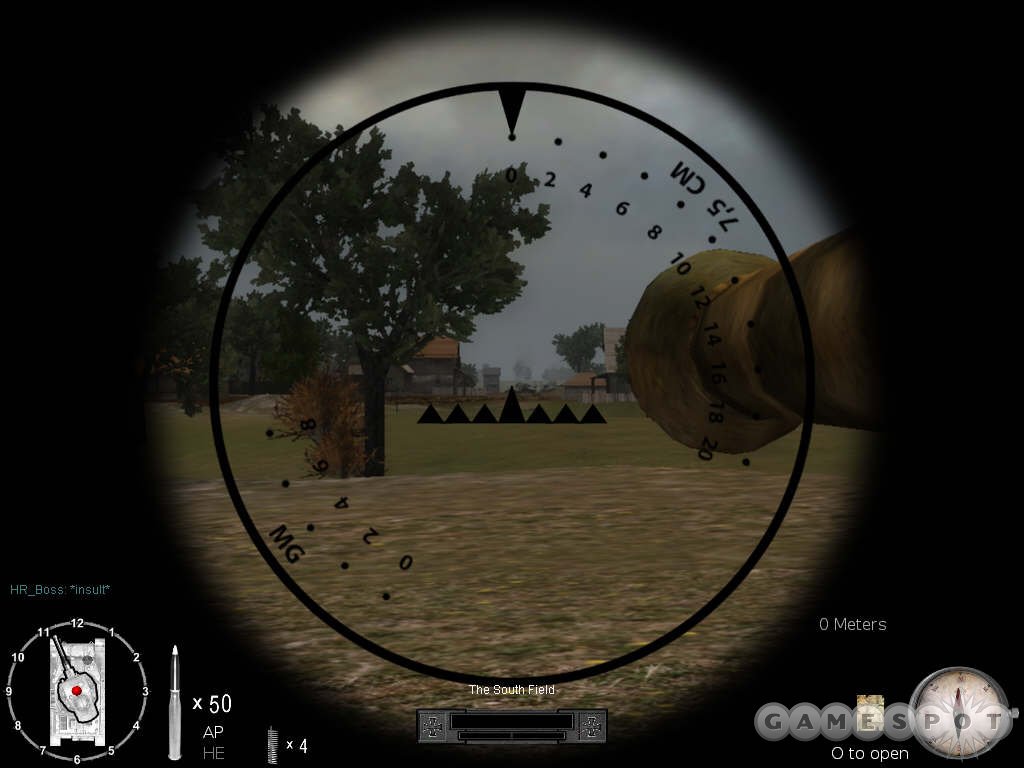Red Orchestra: Ostfront 41-45 is a team-based multiplayer shooter set, as the name suggests, on the brutal eastern front of World War II, where the Russians and Germans fought a brutal war of attrition. While that setup probably sounds pretty familiar to those of us who've played games such as Battlefield 1942 or even Call of Duty, Red Orchestra manages to differentiate itself. The game offers a hardcore gameplay design that weeds out the arcade-shooter crowd with a meticulous attention to realism, albeit sometimes just for the sake of it.

Red Orchestra has its roots in an Unreal Tournament 2003 mod of the same name. Like other such mods, including Counter-Strike and Day of Defeat, Red Orchestra is now available as a stand-alone retail game. The package requires you to activate the game through Steam, which was a process that resulted in some complications for us as we tried to play from an office PC and from a separate home PC. Once you sort those installation issues out, the game loads up like any other game on Steam, and you're able to load up a server browser to search out games to play online. Much like other mod-to-retail games before it, Red Orchestra is an online-only game, although the developers have included a single-player practice mode where you can populate a map with bots--this is a "safer" environment where you can learn the many nuances of the game without getting berated by human players. You'll find that the bots included in the game are pretty brain-dead, so once you get the mechanics down, you'll want to jump right into a live match.
There are 13 maps in Red Orchestra, ranging from small farm towns and the plains surrounding them to a bombed out rail yard and a monastery set atop a hill. These maps are generally quite large and well designed. There's plenty of room to stretch out, which lets teams move around and attempt flanking maneuvers in a lot of cases, though at times it seems like the action doesn't feel as concentrated and directed as it could be. The detail in the environments is pretty good--you'll find buildings to garrison and shoot out from; foxholes and trenches to dive into; and plenty of foliage, rocks, and other debris to use as cover, all of which looks quite good. Most of the maps have required objectives for each team to capture--once all the objectives are reached, that team wins the round. The maps vary from vehicle-oriented maps, where each team has plenty of armored personnel carriers and tanks spawning right at their base; to infantry-only maps; to combined-arms maps, where both infantry and tanks roam about.
One of the interesting things about Red Orchestra is how the various classes work. Like many other team-based shooters, Red Orchestra lets you select from an array of different classes, each of which has special weaponry. Riflemen get guns such as Kar-98s or Mosin Nagants, squad commanders and other shock troopers get submachine guns such as MP-40s. There are also machine gunners who carry heavy automatic weapons such as MG-42s. The vehicle specialists, which are the only class that can jump in a tank or operate other vehicles, only carry a sidearm, but they can pick up weapons lying on the battlefield.
More so than most other team-based shooter classes, these classes feel a lot different from one another. The machine gunner can't shoot accurately from the hip. Not only is there no crosshair to assist your aim, but the gun sprays wildly out of control unless you find a rock or ledge to set the gun down on or go prone so you can deploy the bipod. The machine gunners will also find that the barrels can warp from overheating due to repeated firing, which severely hampers accuracy. Yes, there's a separate button you'll need to learn that swaps in a fresh barrel. Submachine guns have a ton of recoil, more than you'd expect if you're a veteran of the more-popular WWII shooters. Commanders can use binoculars, which on certain maps are used to call in artillery strikes, which need to be radioed in by another player.
You'll find a similar separation of tasks for driving tanks. Unlike other games where one player usually serves as the driver and turret gunner, Red Orchestra has one player exclusively doing the driving, while another player mans the turret and handles reloading (and selecting the type of tank round to use). This requires good coordination between the two players, as the gunner's job is infinitely harder if the driver is constantly lurching around and never stops to let the gunner aim. Even the basic mechanics of driving and shooting a tank gun have an added air of realism--the driver, for example, can only see through a tiny porthole in many tanks. You can pop your head out of some tanks for added visibility at the expense of vulnerability, but for the most part, you'll need to deal with a tunnel view. The gunner meanwhile spends all of his or her time peering through a narrow-view gun sight with rather complicated, and presumably realistic, markings--if you know how to use these markings, you can probably more-easily adjust for elevation as you fire the gun, which seems to exhibit real projectile physics. You can't mouse-aim and turn the turret as fast as you like...instead, you use the WASD keys to aim the turret, which simulates the turning speed and elevation limitations of the various tanks in the game. It all sounds like a real pain, and in all honesty, it can take a while to learn how to effectively operate a tank. But when you find a good driver or gunner partner, and everything comes together, it's all the more satisfying to wreak havoc on the battlefield with a tank in Red Orchestra.
The realism extends to infantry combat, as well. Like Day of Defeat, Red Orchestra uses stamina to limit how much and how often you can run. If you run to the point of exhaustion, you'll find your aim noticeably less steady. There's location-based damage in the game, and you can even have the gun shot right out of your hand, which is quite disconcerting the first time it happens. But more often than not, Red Orchestra is a one-shot, one-kill type of game, so you quickly learn to keep your head down, crouch, and crawl most of the time to stay under cover, only popping out to take a shot. It's not just about aiming down the iron sights of your weapon either. If you're armed with a bolt-action rifle and fire, you need to press the shoot button again to work the bolt, eject the spent cartridge, and load a new round into the breech. Forcing you to work the bolt on your rifle seems somewhat over the line as far as realism goes, but real grognards may still get a kick out of it.

Beyond the large, wide-open maps, Red Orchestra is a great-looking game, which is what you'd expect from something based off of Unreal Tournament 2004. The character models can look a little generic, and they animate stiffly at times, but the level of detail put into the vehicle models is appreciable. There's even a nice shellshock, shaky visual effect when an explosion goes off near you or when bullets are whizzing near your head. The sound effects in the game are also great. The gun effects are sharp and varied, depending on what weapon you're using, and the tanks in the game rumble about with the expected authority, both from their massive engines and the booming cannons when they're fired. There's also built-in voice-over-IP support, which a lot of players seem to use--for a game such as this that requires a lot of close teamwork, it definitely comes in handy and works well. Overall, the presentation of Red Orchestra is about what you'd expect from a good war game.
If you're looking for an easy-to-play, online, team-based shooter, Red Orchestra is not it. The various nuances in the game, such as driver and gunner separation in tanks, one-shot kills, and stamina modeling will probably be turnoffs to those who are looking for something that's pick-up-and-play ready. But for those who can appreciate a more-realistic and technical gameplay experience, there's definitely a lot to like in Red Orchestra. Large maps, a focus on teamwork, and attention to detail in the various weapons and vehicles make for a game that hardcore wargamers will find enjoyable.